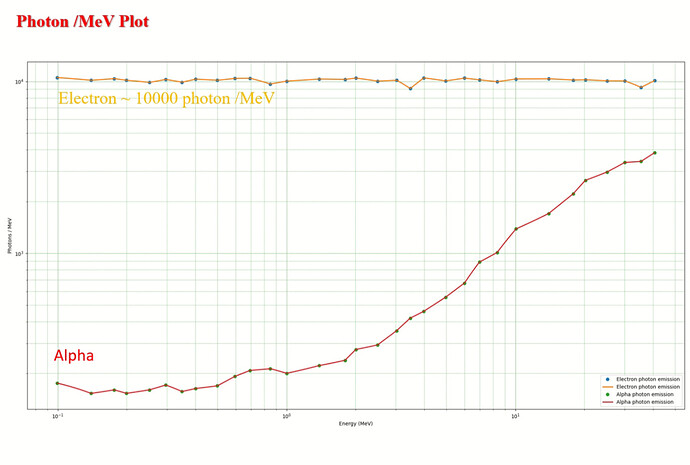the codes are from “Book For Application Developers”, at page 245:
//Liquid Xenon
fLXe = new G4Material(“LXe”,z=54.,a=131.29g/mole,density=3.020g/cm3);
std::vector lxe_Energy = {7.0eV, 7.07eV, 7.14*eV};
std::vector lxe_SCINT = {0.1, 1.0, 0.1};
std::vector lxe_RIND = {1.59, 1.57, 1.54};
std::vector lxe_ABSL = {35.*cm, 35.*cm, 35.*cm};
fLXe_mt = new G4MaterialPropertiesTable();
fLXe_mt->AddProperty(“SCINTILLATIONCOMPONENT1”, lxe_Energy, lxe_SCINT);
fLXe_mt->AddProperty(“SCINTILLATIONCOMPONENT2”, lxe_Energy, lxe_SCINT);
fLXe_mt->AddProperty(“RINDEX”, lxe_Energy, lxe_RIND);
fLXe_mt->AddProperty(“ABSLENGTH”, lxe_Energy, lxe_ABSL);
fLXe_mt->AddConstProperty(“SCINTILLATIONYIELD”, 12000./MeV);
fLXe_mt->AddConstProperty(“RESOLUTIONSCALE”, 1.0);
fLXe_mt->AddConstProperty(“SCINTILLATIONTIMECONSTANT1”, 20.*ns);
fLXe_mt->AddConstProperty(“SCINTILLATIONTIMECONSTANT2”, 45.ns);
fLXe_mt->AddConstProperty(“SCINTILLATIONYIELD1”, 1.0);
fLXe_mt->AddConstProperty(“SCINTILLATIONYIELD2”, 0.0);
fLXe->SetMaterialPropertiesTable(fLXe_mt);
// Set the Birks Constant for the LXe scintillator
fLXe->GetIonisation()->SetBirksConstant(0.126mm/MeV);
here “fLXe_mt->AddProperty(“SCINTILLATIONCOMPONENT1”, lxe_Energy, lxe_SCINT);” is used to specify the spectrum of scintillation?
what exact meanings of the parameters of {0.1, 1.0, 0.1} from std::vector lxe_SCINT = {0.1, 1.0, 0.1};
